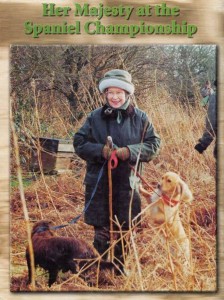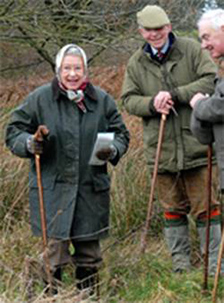Of Snipes and Spaniels
America’s most unappreciated game bird offers ideal sport for the flushing spaniel.
( published in Spaniels In The Field – winter 1998 )
 Snipe hunting suffers from a bad reputation in the U.S., due largely to a famous practical joke in which an inexperienced hunter is abandoned in the woods at night by his hunting partners. After long hours of lying in wait to “bag” a snipe, the victim eventually realizes he’s been fooled, and begins the long, lonely walk home-the moral of the prank supposedly being “there’s no such thing as a snipe”.
Snipe hunting suffers from a bad reputation in the U.S., due largely to a famous practical joke in which an inexperienced hunter is abandoned in the woods at night by his hunting partners. After long hours of lying in wait to “bag” a snipe, the victim eventually realizes he’s been fooled, and begins the long, lonely walk home-the moral of the prank supposedly being “there’s no such thing as a snipe”.
But the Common Snipe is a real bird, and a game bird at that. Found worldwide, it is a popular quarry in the British Isles, France, and a host of other countries. The Wilson’s Snipe, the North American subspecies, was also once relentlessly pursued by U.S. hunters. But a 12-year federal ban on the sport in the first half of this century caused a generation of hunters to turn their attention to other game birds. Though the season later reopened, the snipe never regained its former U.S. sporting tradition. This is too bad, especially for spaniel owners, because the bird is probably best hunted behind one of our flushing breeds.
Although a few devout enthusiasts still go out specifically for snipe, most birds shot in this country are taken only incidentally by hunters in pursuit of other game. And what class of sporting dogs more ideally suits such a rough shoot than the sporting spaniels? Add to this the fact that snipe are nervous birds that typically do not lie well for a pointing dog-and the fact that what little scent they do have, some dogs find unpleasant-and you’ll see that a close-ranging, retrieving spaniel is the dog to have along on a snipe shoot.
Even the bird’s autumnal staging areas have spaniel written all over them. Bog pools, wet meadows, low pasture land, creek banks, shallow marshes-almost any place with a healthy mix of wet muck and vegetation has the potential to harbor snipe during migration. Unlike the dry, expansive uplands where the pointing breeds reign supreme-or the large, frigid bodies of open water where the retrievers earn their keep-this transition area of wet uplands is exactly what our sporting spaniels were bred to hunt.
Most hunting is done by walking the birds up. When a snipe is flushed, the bird quickly darts away in a zig-zag pattern, and thus when shot, can drop just about anywhere. If it falls in the dryer uplands, its streaked plumage makes it almost impossible to find amidst the grass and mud. Here, the flushing spaniel’s natural skills on the “hunt dead” come in handy. If the bird’s futile escape flight happened to carry it out over deeper, open water, the average spaniel will have no problem swimming out to complete the typically short, early-season retrieve. Since snipe are not large birds nor very  active cripples, even the smallest of our spaniels can handle this type of retrieving.
active cripples, even the smallest of our spaniels can handle this type of retrieving.
At other times, soft earth can make the walking treacherous and the snipe virtually inaccessible. In these situations, hunters need to pole a boat out and jumpshoot birds from the water’s side of the creek or marsh. Because the waterway is generally very narrow, shallow, and choked with vegetation, small crafts with shallow draws are necessary. A flyweight spaniel is the ideal companion here. His small size means less weight to hang the boat up when poling between the tussocks. It also means the craft stays upright when the little dog launches out for the retrieve once snipe are jumped.
On rare occasions, one encounters snipe on small tracts of cover that they are reluctant to leave. When birds are present in numbers and are constantly moving around in small “wisps”, it’s possible to set up within range of such preferred feeding areas and wait for birds to come pitching down. At other times it’s possible to identify minor flight lanes the birds use when flitting restlessly between neighboring feeding areas, and pass-shoot the birds as they fly overhead. In these situations, a spaniel reasonably proficient at nonslip retrieving can be a real asset for rounding up downed birds between volleys of gunfire.
The snipe has many endearing features beyond the excellent dog work it provides. As with doves, bag limits are high and many states offer early seasons. The bird is a challenging target and is a table delicacy. Maybe if it were thought of as a “marsh dove”, the snipe would be pursued more often by America’s hunting spaniels and their gun-toting owners.



